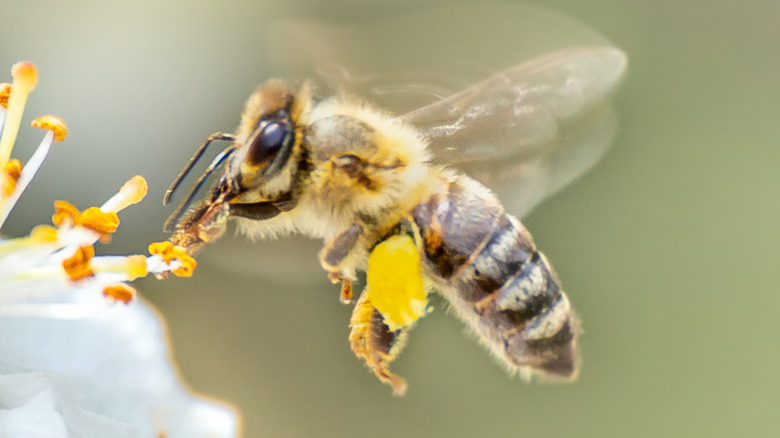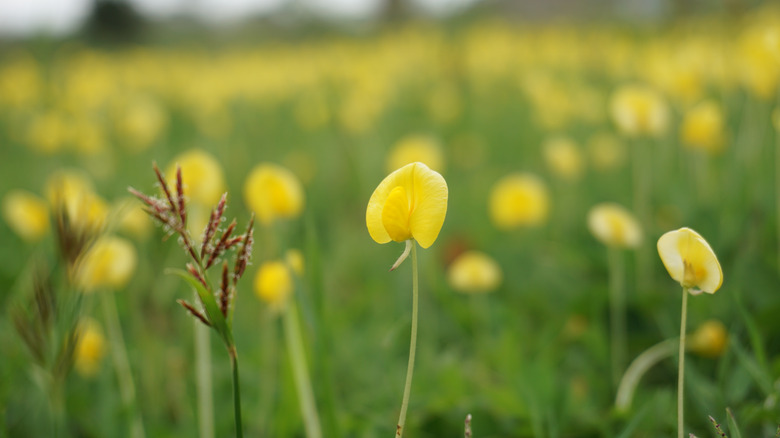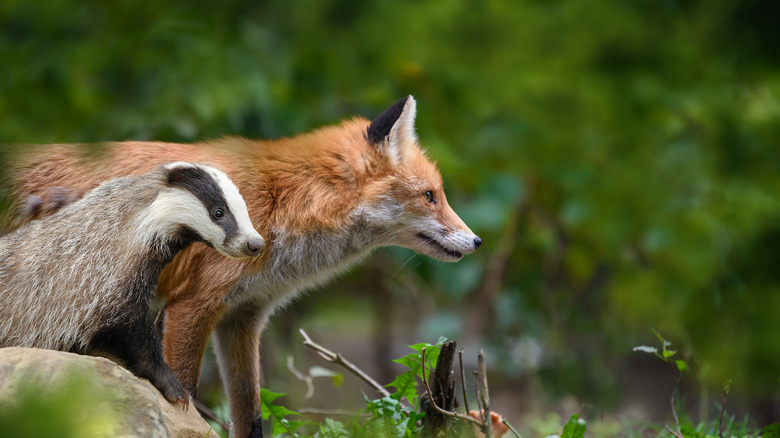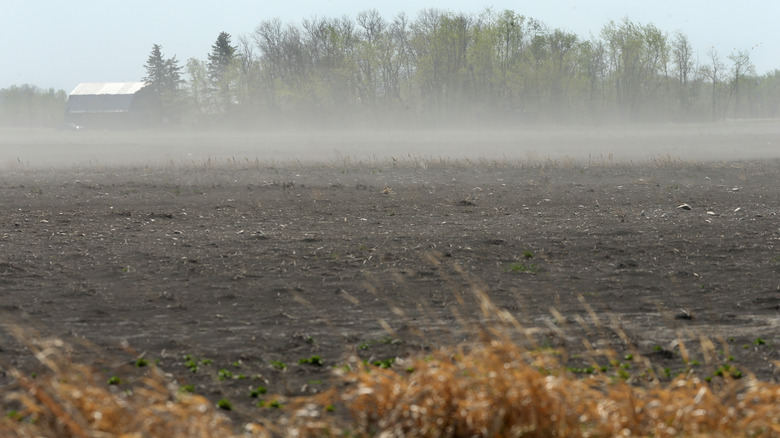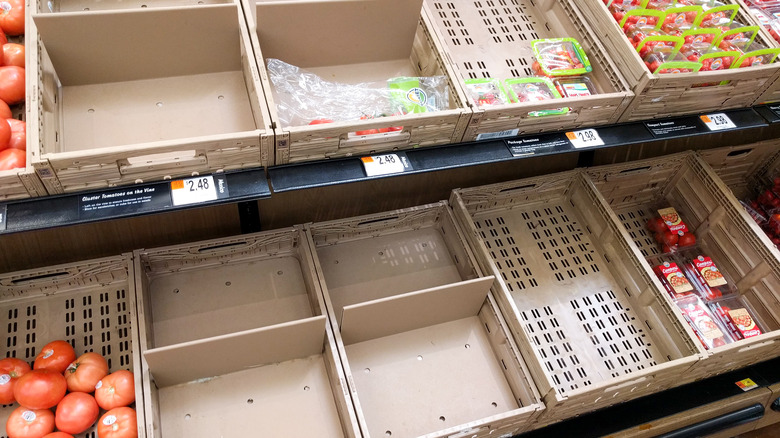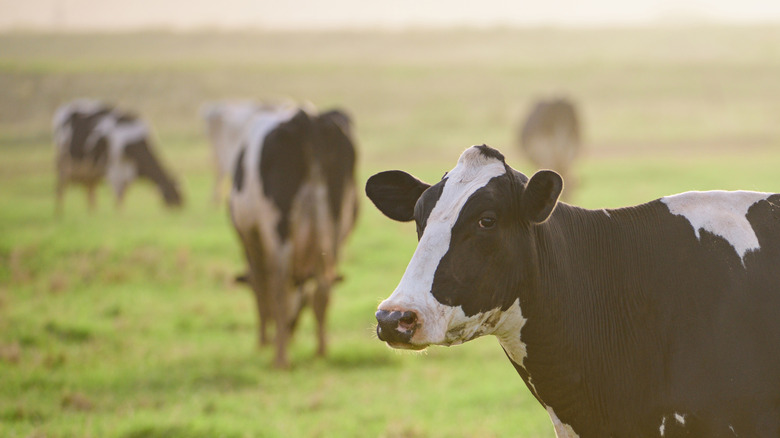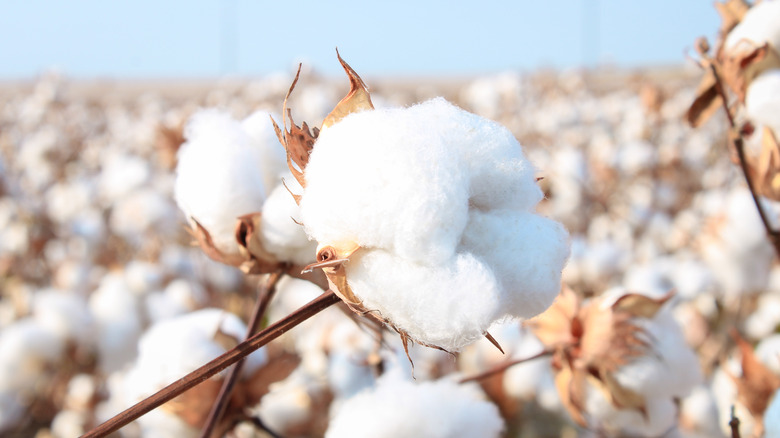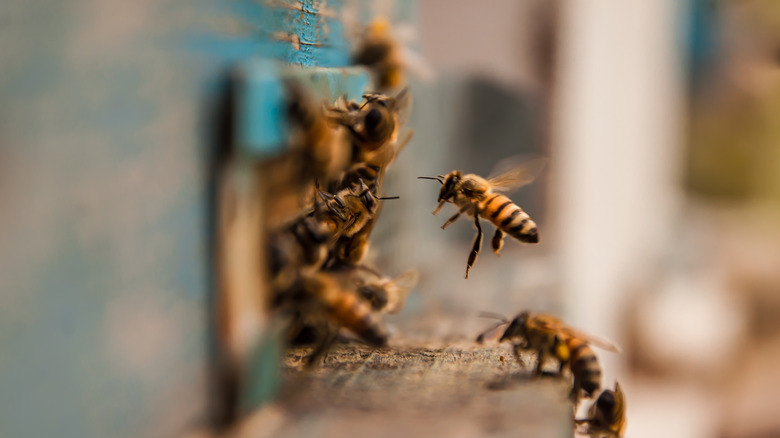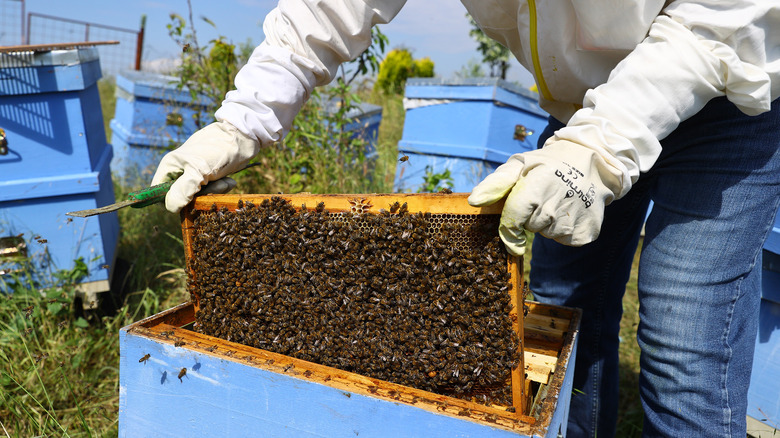What Would Happen If All The Bees Died?
Bees play a variety of very important roles on our planet, so what would happen if they all died? For starters, all the bee products we know and love would be wiped from the face of the Earth. That means no more sticky-sweet honey for our food, beeswax for our candles and chapstick, or bee pollen for our acai bowls. (God forbid!)
If all the bees died, we would miss far more than just the things they produce, though. Bees are an essential ecological part of our world, pollinating one third of the crops we eat and up to 90% of wild plants. They provide us fruits and vegetables, medicines, fibers for cloth, and so much more. Through a series of effects, they might even be responsible for the stability of our global climate.
Unfortunately, bees are in a more perilous situation than you might think. In fact, the Bee Informed Partnership found in their annual survey that 44% of the nation's domesticated bee colonies died off in the 2015-2016 season. If that wasn't scary enough, scientists predict it would only take three months post-beepocalypse to see dramatic changes to our Earth and way of living (via Vice), so the consequences of a bee-less life could be closer than you think.
Some plants would die off
Many bee species coevolved with certain flowers, making them a match made in pollination heaven. Take, for example, the bee orchid, which evolved to have its petals mimic a female bee. It uses its looks to entice male worker bees, who come over looking to mate but end up pollinating the flower instead. Bees' fuzzy legs and bodies are tailor-made for the act of pollination: Their fur easily picks up pollen, bringing it from one flower to another (via Science Daily).
This means that while many plants can be pollinated by a variety of creatures (namely birds, bats, and other insects), bees are the best critters for the job in most cases — and sometimes the only ones able to perform the duty at a reasonable pace. Many flowering plants can self-pollinate or use the help of the other pollinators, but bees are often by far the fastest pollinators out there.
If all the bees died, there would be nothing else to naturally pollinate some plants at the speed required to maintain the species. These cases would require human intervention on too grand a scale to really be plausible, leaving key species to die out.
Extinction events of wild animals
Ecosystems rely on biodiversity to balance the intricate web of life they support. If key plant species (such as those that can only effectively be pollinated by bees) were to die off, it would send a chain reaction through many ecosystems. Herbivores would be the first affected, as many of the plants they feed on would disappear, and starvation would shrink population sizes. The scarcity of such creatures lower on the food chain would mean their remaining populations could easily be wiped out by predators. Once the predators eat all their prey, they themselves would face a shortage in food supply. Numbers of both predators and prey would quickly dwindle, and soon even the decomposers would have little to digest.
While this might not sound like a giant deal for the human race, think again. Wild animals play such a pivotal role in ecosystem function that our entire global climate could change if enough of them died out. According to evolutionary biologist Suzanne Sadedin (via HuffPost), a sudden broad animal extinction event could cause "abrupt loss of rainfall, atmospheric change and climate change" as the forests and grasslands begin to fail. All these changes could make it, "difficult, if not impossible to maintain soil conditions to grow crops," spelling disaster for humankind.
Global famine
While much of the human diet is made up of wind-pollinated cereal grains like wheat and corn, the fruits and vegetables necessary to our nutritional well-being are largely pollinated by bees. Hand and mechanical pollination is possible for certain foods and flowers on a smaller scale, but it would not be possible for humans to pollinate the amount of these crops necessary to feed the global masses, resulting in famine across the world.
Additionally, such abrupt changes in the global climate and soil conditions would make for a dire shortage in food. According to Nature Education, soil is "the foundation of agriculture." Without proper soil health, growing successful crops with high yields is nearly impossible. What's more, humans rely on a certain amount of consistency in the Earth's climatic conditions (namely heat/cold and rain) to ensure crop health. Erratic or extreme conditions will make farming increasingly difficult, in some cases requiring regions to change crops entirely, altering the staples which different global cuisines have come to rely on. In short, not only would we have bland diets, but we would not be able to produce enough food for everyone to eat.
Widespread malnutrition
Losing much of the world's produce means cutting out many of the micronutrients we need to live a healthy life. According to National Geographic, although cereal grains have some nutritional benefits, "they do not provide the full, healthy range of nutrients. People must add other foods to their diets to avoid malnutrition." So while the human race won't immediately die out on a diet of only wind-pollinated staple grains, we would probably become very sickly and weak.
And if you think your "Flintstones" gummy vites will save you, think again. Vitamins are organic compounds harvested from the natural world, usually from fruits, vegetables, and other bee-pollinated plants (but also sometimes organisms like fish or animal products like dairy and eggs). Without the vitamins and minerals essential to human health, some scientists even predict the resurgence of nutritional issues like scurvy, which were largely eradicated with the help of increased access to nutritious produce.
Food prices and insecurity would go up
While hand and mechanical pollination is possible, it is incredibly expensive. According to Vice, MIT researchers calculated the cost of hand-pollinating roughly 2 acres of an apple orchard to be between $5,715 and $7,135, while the current cost using bees is about $90. Consumers would shoulder the majority of that massive price increase. Basically, food would be incredibly expensive.
As food insecurity already affects 12% of the American population (42 million people) and 25% of the world (1.9 billion people), such drastic price hikes would significantly up food insecurity across the world. There would be struggles in not only growing enough food to feed the masses but ensuring that they are able to afford it. Additionally, given that there are already severe problems with the global distribution of food — there is enough food on Earth to feed everyone, yet calories are often diverted from those in need to be given to livestock and, in turn, wealthier populations — such scarcity and economic inhibitors would add to the already dramatic inequality in the food system.
Say goodbye to meat and dairy
Remember that thing about too many global calories being converted to livestock feed? Well, that means meat and dairy would likely go down the drain during a mass scarcity event. Livestock are notoriously bad at converting calories from feed into energy, which means they have to eat way more calories in feed than they produce in meat. To put this into perspective, A Well-Fed World reports that beef cows are capable of eating 25 times more feed than they produce in edible pounds of meat. While meat can be an important source of both macro- and micronutrients, the up-front cost of calories from cereal grains would be too great.
And don't think just because we're culling beef cows that dairy cows are safe. While beef cattle are kept alive an average of one or two years before being butchered, dairy cows are usually kept for six. This means maintaining an inefficient converter (no offense, cows) for up to five more years than a cow meant for slaughter, which translates to five more years of calories lost to keeping the animal on hand. When global calories are scarce, it just doesn't make sense to maintain herds of feed animals, no matter the nutritional benefits they provide.
A change in the textile industry
According to the folks at Just Bee, while bees aren't necessary to produce cotton, they do increase the "quantity and quality of the cotton lint." This means that without our fuzzy friends, there would be massive changes in available natural fibers. Cotton is the second-most-produced textile in the world behind polyester, accounting for 24.4% of the global market share. All the other natural fibers available make up only roughly 7% of the global market, meaning a loss of cotton would leave the vast majority of the market up to man-made fibers. Hello, polyester!
Additionally, what little of the cotton market that remains intact would not look the same as it does today. Normally inexpensive items like cotton undergarments and T-shirts would become hot commodities, and pricer items like mattresses and linens would become too expensive for many to afford. What little cotton there was would be less durable, making cotton goods a worse investment.
While polyester and other man-made fibers can be great for certain things, they are not very breathable and are often blended with cotton to prevent heat and odor buildup. What's worse, polyester releases tons of microplastics into the water system every time it's washed, even contributing as much as 75% of the Arctic Ocean's plastic pollution. Lastly, polyester is petroleum-based, which makes it very carbon-intensive. A shift in the market away from cotton and toward polyester could have negative implications for the climate, which would compound many of the issues caused by a lack of bees.
Declines in available medicine
Although it may come as a surprise, the medical system would look very different without the help of bees. Many common drugs rely on flowering plants. Aspirin, which is made from willow and aspen, would be in jeopardy, in addition to morphine, which comes from the poppy flower (via Just Bee). The plant that is used to make the anti-malaria drug quinine also relies on bees, and malaria kills hundreds of thousands of people every year. Certain cancer drugs, including those for childhood Leukemia, are made using the periwinkle plant, which requires bees to reach a high enough yield for commercial cultivation. In short, we would lose many of the drugs on which the medical system has come to rely.
Additionally, much of the world's traditional medicine would be lost without bees. From Chinese hawthorn berries (used for digestive and cardiac issues) to the Cheyenne tribe's milkweed (used as an eyewash for snow blindness), bees are used around the world to cultivate plants for healing. According to a 2017 article by José Maurício Sforcin et al., ointment containing bee pollen has been shown to reduce healing time for burns, honey can improve the oral health of chemotherapy patients, and propolis (basically the glue bees make to build their hives) reduces oxidative stress in diabetic patients. The bees themselves are even used for healing in many groups, with venom from stings used as a treatment for arthritis, inflammation, and even cancer.
No more caffeine
Bad news for all the coffee lovers out there: Bees play a large role in the production of coffee beans. Coffee plants come in two varieties, arabica and robusta. The plants have different flavor profiles, are cultivated in different areas of the world, and, it turns out, have different pollination needs. While arabica plants can wind-pollinate by themselves (although they produce up to 16% more berries when bees are present), robusta plants require the hard work of bees to cross-pollinate. As robusta accounts for 40% of global coffee production, the death of all the world's bees would spell serious disaster for the coffee industry (via Bees for Life).
Bee extinction would cause coffee supplies to sharply decline, and, predictably, prices would severely increase. If you think that latte is expensive now, think how much it would be if nearly half the world's coffee supply was cut off? Bees also increase the quality of the crop, which means the coffee that would remain on Earth wouldn't be as good, anyway.
And don't go thinking you can fall back on tea. Camellia sinensis, aka the tea plant, is pollinated by bees. And when we say "tea," we mean almost every single tea: Black, green, oolong, white, and dark teas all come from Camellia sinensis.
Farewell to flavor in food
In addition to losing a wide variety of the produce that makes food delicious, we would lose many other components of a flavorful diet. Spices like vanilla, coriander, allspice, nutmeg, and fennel all require bees to pollinate. Fall will never smell the same! If that wasn't enough, sugarcane and sugar beets benefit from bee pollination, so those with a sweet tooth will be faced with a difficult stretch — don't forget we already lost honey!
Key aromatics like onion and garlic, as well as most herbs, also benefit from bees. As many global cuisines rely on these aromatics to build their traditional flavor profiles, losing bees would mean not only a loss of flavor but a loss of the rich cultural heritage that is passed down through food. Additionally, these spices, herbs, and other flavor-givers are also important sources of micronutrients (via Chemistry Central Journal), helping us round out our diet while providing us with delicious tastes. The loss of flavor in food in the face of a bee extinction would have negative implications for human health, culture, and happiness.
What threats do bees face today?
In recent years, bee populations have declined significantly due to a variety of reasons. In fact, the U.S. saw a 60% decline in bees between 1947 and 2008 (via Greenpeace), making the threat of losing bees for good a serious one. Invasive mites, called Varroa mites, have become a problem. They can cause malformation in baby bees, inability for adult bees to find the hive if they leave, multiple diseases, and the eventual collapse of a colony. Pesticides from commercial farms, backyard gardens, and groundskeeping can also make their way into hives, poisoning individual bees and potentially entire colonies. Other harsh agricultural practices like monocropping over large swaths of land means a lack of feeding space for bees, which has also devastated populations. Bees will either be stuck eating one type of flower, leading to malnutrition, or will be unable to cross an entire farm of wind-pollinators, causing them to die in their search for food.
Lastly, colony collapse disorder has become a severe threat to bees in the past two decades. Scientists have yet to determine the root cause of the disorder, which causes the abandonment of the hive by healthy adult bees. According to the U.S. Environmental Protection Agency, the queen and a few nurses remain, but their efforts are not enough to support the hive. Although 60% of national colony loss was attributed to colony collapse disorder in 2008, numbers have improved, with only 30% of hive deaths implicated in 2013 (via National Pesticide Information Center).
What is being done to save the bees?
Luckily for our pollinating friends, there are many efforts underway to slow their population declines. The E.U. banned outdoor use of three major neonicotinoid pesticides in 2018, which represented a major step toward maintaining bee health (although a loophole has prevented this law from being as effective as it could be). Robots are even being developed which can feed, seed, and weed fields, reducing the need for herbicides up to 95% (via Reset). Intensive research efforts have been underway in the past decade to solve the problem of colony collapse disorder, and scientists are gaining a greater understanding of the synergistic effects that lead to it.
A slew of pollinator-friendly legislation has passed, with bills protecting wildlands and other pollinator-friendly areas, giving preference to native plants when designing outdoor spaces, and directing funds to the Beekeeper's Association. There have also been many public campaigns as of late, with citizens being encouraged to plant flowers for bees to graze on in urban environments, make their own hives on rooftops and in backyards, or purchase from pollinator-friendly brands. Additionally, any and all climate change-related legislation is good for bees, as they rely on the delicate balance of the Earth's natural systems. If we continue to stick to policies and practices that are good for bees, hopefully their chances of long-term survival will continue to improve.
